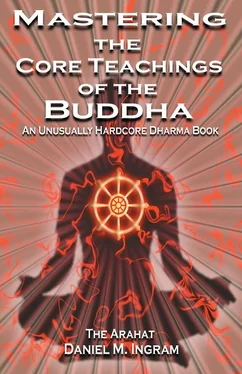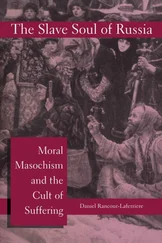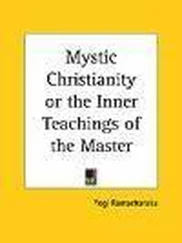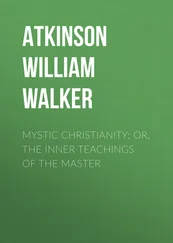Daniel Ingram - Mastering the Core Teachings of Buddha - An Unusually Hardcore Dharma Book
Здесь есть возможность читать онлайн «Daniel Ingram - Mastering the Core Teachings of Buddha - An Unusually Hardcore Dharma Book» весь текст электронной книги совершенно бесплатно (целиком полную версию без сокращений). В некоторых случаях можно слушать аудио, скачать через торрент в формате fb2 и присутствует краткое содержание. Год выпуска: 2009, ISBN: 2009, Издательство: Aeon Books, Жанр: Старинная литература, на русском языке. Описание произведения, (предисловие) а так же отзывы посетителей доступны на портале библиотеки ЛибКат.
- Название:Mastering the Core Teachings of Buddha - An Unusually Hardcore Dharma Book
- Автор:
- Издательство:Aeon Books
- Жанр:
- Год:2009
- ISBN:9781904658405
- Рейтинг книги:5 / 5. Голосов: 1
-
Избранное:Добавить в избранное
- Отзывы:
-
Ваша оценка:
- 100
- 1
- 2
- 3
- 4
- 5
Mastering the Core Teachings of Buddha - An Unusually Hardcore Dharma Book: краткое содержание, описание и аннотация
Предлагаем к чтению аннотацию, описание, краткое содержание или предисловие (зависит от того, что написал сам автор книги «Mastering the Core Teachings of Buddha - An Unusually Hardcore Dharma Book»). Если вы не нашли необходимую информацию о книге — напишите в комментариях, мы постараемся отыскать её.
Mastering the Core Teachings of Buddha - An Unusually Hardcore Dharma Book — читать онлайн бесплатно полную книгу (весь текст) целиком
Ниже представлен текст книги, разбитый по страницам. Система сохранения места последней прочитанной страницы, позволяет с удобством читать онлайн бесплатно книгу «Mastering the Core Teachings of Buddha - An Unusually Hardcore Dharma Book», без необходимости каждый раз заново искать на чём Вы остановились. Поставьте закладку, и сможете в любой момент перейти на страницу, на которой закончили чтение.
Интервал:
Закладка:
We also may have faith that we might be able to attain to high states of consciousness, so we sit down on a cushion and energetically try to stabilize our attention. We realize that if we are not paying attention, being mindful, then this is impossible, so we work on mindfulness of our object and of the qualities of the state we wish to attain. We develop strong concentration on an object, stabilizing more consistently. We attain to high states and thus gain an understanding of how to navigate in that territory and the uses of doing so. Our success creates more faith, and so we apply energy to further develop our concentration abilities.
We begin to think it might be possible to awaken, we have faith, so we energetically explore the sensations that make up our world without exception. With an alert and energetic mind we explore this heart, mind and body just as it is now with mindfulness. Reality becomes more and more interesting, so our concentration grows, and this combination of the first four produces fundamental wisdom. Wisdom leads to more faith, and the cycle goes around again.
The teaching of the Five Spiritual Faculties has also been explored at great lengths in many books, and there really is a lot to it. In its simple form you can easily apply it, and it can really help sometimes. Balance and strengthen. Strengthen and balance. These are the cycles we go through with these faculties, and there is no limit to the level at which they can be mastered.
One other thing is accurately said of the Five Spiritual Faculties as they apply to insight training: when they are balanced and perfected, this is sufficient cause for awakening.
37
6.THE SEVEN FACTORS OF ENLIGHTENMENT
The Seven Factors of Enlightenment are mindfulne ss ,
inve stigat ion o f the truth , energy , rapture , tranquility , conce ntratio n and equanimit y. So, we have three concepts from the Five Spiritual Faculties and four that seem new but have actually already been touched on to some degree. The order here is actually closely related to the stages of something called “The Progress of Insight,”
which is like a map of standard stages through which diligent insight meditators pass in cycles. This connection is a fairly advanced topic that will be explored later.
The Seven Factors of Enlightenment might be regarded as a
pyramid with mindfulness as the base and each factor supporting and helping create the other. However, every factor is also important at every stage as well, so we will look into each of these and see what they can tell us.
MINDFULNESS
Mindful nes s has already been covered above, but in terms of practice I will say that mindfulness can be really useful in sorting out what is mind and what is body, as mentioned on the section on impermanence in the Three Characteristics. You might want to read that one again, as it is really relevant to practically applying these first two factors of enlightenment. Basically, we need to know the basic sensations that make up our world. This is the crucial foundation of insight practices. Not surprisingly, the first classic insight that leads to the others is called “Knowledge of Mind and Body” and arises when we learn to clearly distinguish between the two as they occur.
So with mindfulness we sort out what is physical, what is visual, what is mental, what is pleasant, what is unpleasant, what is neutral, and all of that. We can know what is a mental sensation and what is a related physical feeling. We can know what specific sensations make up our emotions. We can know each thing and the mental impression of it that follows it. We can know the intentions that precede actions and thoughts. We can know where sensations are in relation to each other.
We can know exactly when they occur and how they change during their very brief stay. We can and should sort these out as best we can.
The Seven Factors of Enlightenment
Be patient and precise. Become fluent in the sensations that make up your reality.
While I have tried to avoid advocating one specific insight tradition or technique over any other, there is an exercise that you might find helpful when trying to do this. It is commonly called “Noting,” and it has its origins in the Pali Canon in Sutta #111, One by One as They Occurred, of The Middle Length Discourses of the Buddha (very worthwhile reading). It is used primarily in the Mahasi Sayadaw insight tradition from Burma, though related exercises are found in various Zen traditions, notably Soto Zen and Korean Chan, and probably in Tibetan Hinayana traditions as well.
Noting is the practice that got me the most breaks and insights in my early practice, particularly when coupled with retreats, and my enthusiasm for it is understandably extreme. I still consider it the foundation of my practice, the technique that I fall back on when things get difficult or when I really want to push deep into new insight territory.
Thus, of all the techniques and emphases I mention in this book, take this one the most seriously and give it the most attention. Its simplicity belies its astonishing power.
The practice is this: make a quiet, mental one-word note of whatever you experience in each moment. Try to stay with the sensations of breathing, noting these quickly as “rising” (as many times as the sensations of the breath rising are experienced) and then “falling” in the same way. This could also be considered fundamental insight practice instructions. When the mind wanders, notes might include “thinking,”
“feeling,” “pressure,” “tension,” “wandering,” “anticipating,” “seeing,”
“hearing,” “cold,” “hot,” “pain,” “pleasure,” etc. Note these sensations one by one as they occur and then return to the sensations of breathing.
Here are some valuable tips for successful noting. Don’t get too neurotic about whether or not you have exactly the correct word for what arises. The noting should be as consistent and continuous as possible, perhaps one to five times per second. Speed and an ability to keep noting no matter what arises are very important. Anything that derails your noting practice deserves aggressive and fearless noting the next time it arises. Note honestly and precisely. So long as you note whatever arises, you know that you were mindful of it. Noticing each 39
The Seven Factors of Enlightenment
sensation and those that follow, you will see their true nature. Seeing their true nature, you will gain profound insights.
What the sensations are doesn't matter one bit from the point of view of noting practice. What is important is that you know what they are. The difference between these two perspectives should be clearly understood. This practice is directly related to Koan practices such as
“what is it?” and is loosely related to breathing exercises where you count breaths from 1 to 10.
One of my very best insight meditation teachers, a monk from Singapore, would hold interviews every two days while I was on my third retreat. It was a beautiful center in Penang, Malaysia that was very conducive to practice. I would come in and describe all sorts of experiences that I was all excited about, and he would simply listen calmly to me go on and on and then finally ask, “Did you note it?”
That was almost all he ever said. It was amazing how easy it was to forget that simple instruction, and equally amazing how extremely useful it was when I remembered to follow it. He didn't seem to care about anything other than that I get to know my reality as it was with great precision and consistency. I knew very little theory then, but during those two weeks I practiced noting quickly all day long and made the fastest progress I have ever made in my life, getting all the way to the very brink of first awakening in a mere 14-day retreat. Since that time, I have been a big fan of this particularly direct and down-to-earth method.
Читать дальшеИнтервал:
Закладка:
Похожие книги на «Mastering the Core Teachings of Buddha - An Unusually Hardcore Dharma Book»
Представляем Вашему вниманию похожие книги на «Mastering the Core Teachings of Buddha - An Unusually Hardcore Dharma Book» списком для выбора. Мы отобрали схожую по названию и смыслу литературу в надежде предоставить читателям больше вариантов отыскать новые, интересные, ещё непрочитанные произведения.
Обсуждение, отзывы о книге «Mastering the Core Teachings of Buddha - An Unusually Hardcore Dharma Book» и просто собственные мнения читателей. Оставьте ваши комментарии, напишите, что Вы думаете о произведении, его смысле или главных героях. Укажите что конкретно понравилось, а что нет, и почему Вы так считаете.












